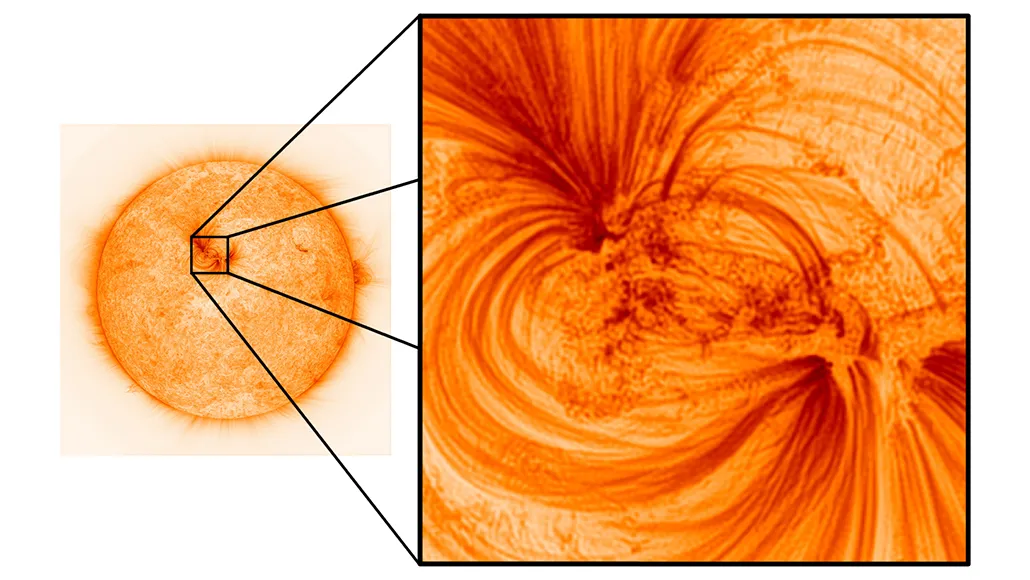New images of the sun reveal superfine threads of glowing plasma
The filaments are in solar regions that had appeared rather bland

A delicate comb-over of plasma filaments never seen before appears in this image (in the upper right part of the box) from NASA’s Hi-C suborbital solar telescope. The image of the full sun is from NASA’s Solar Dynamics Observatory.
University of Central Lancashire, NASA